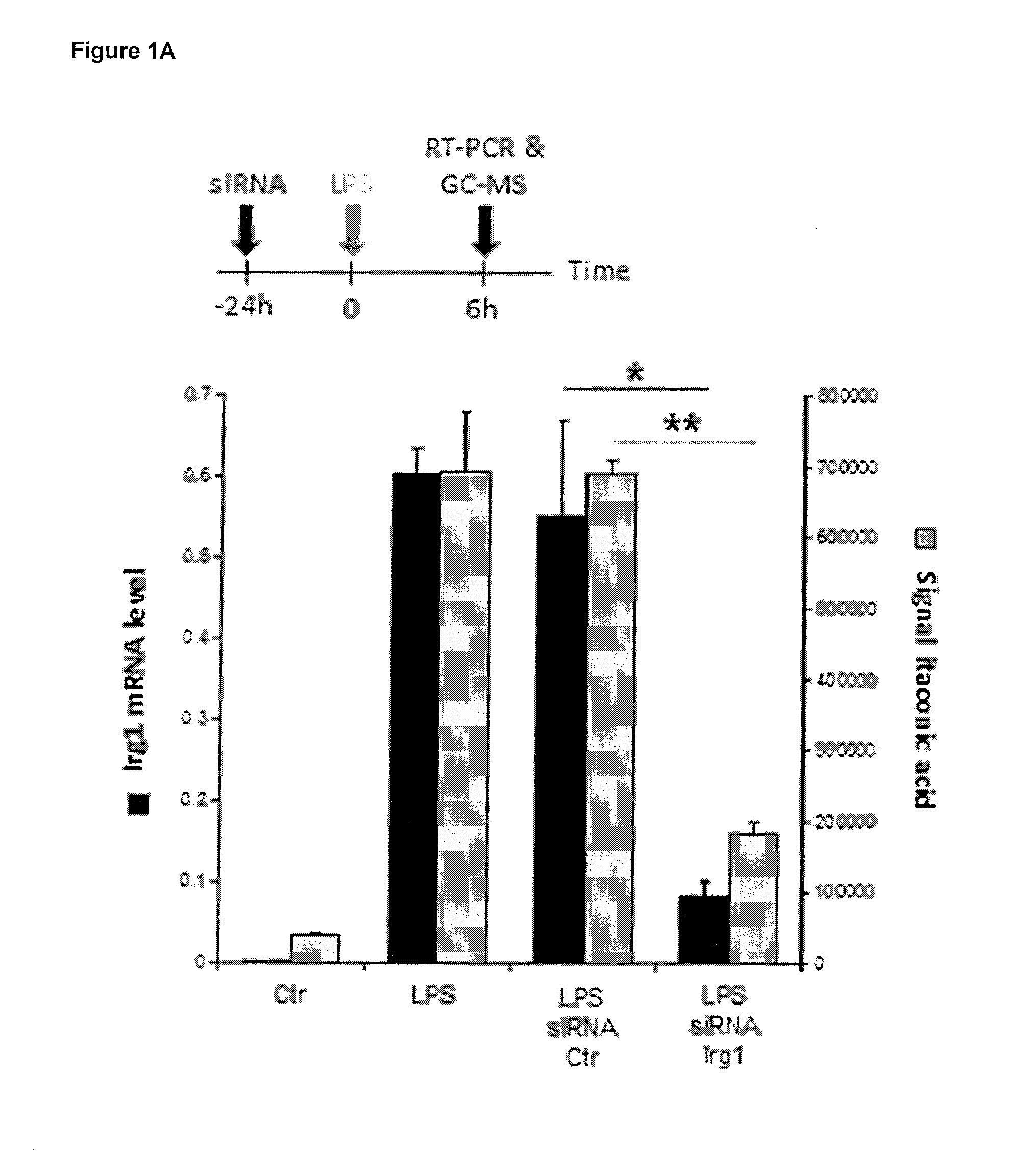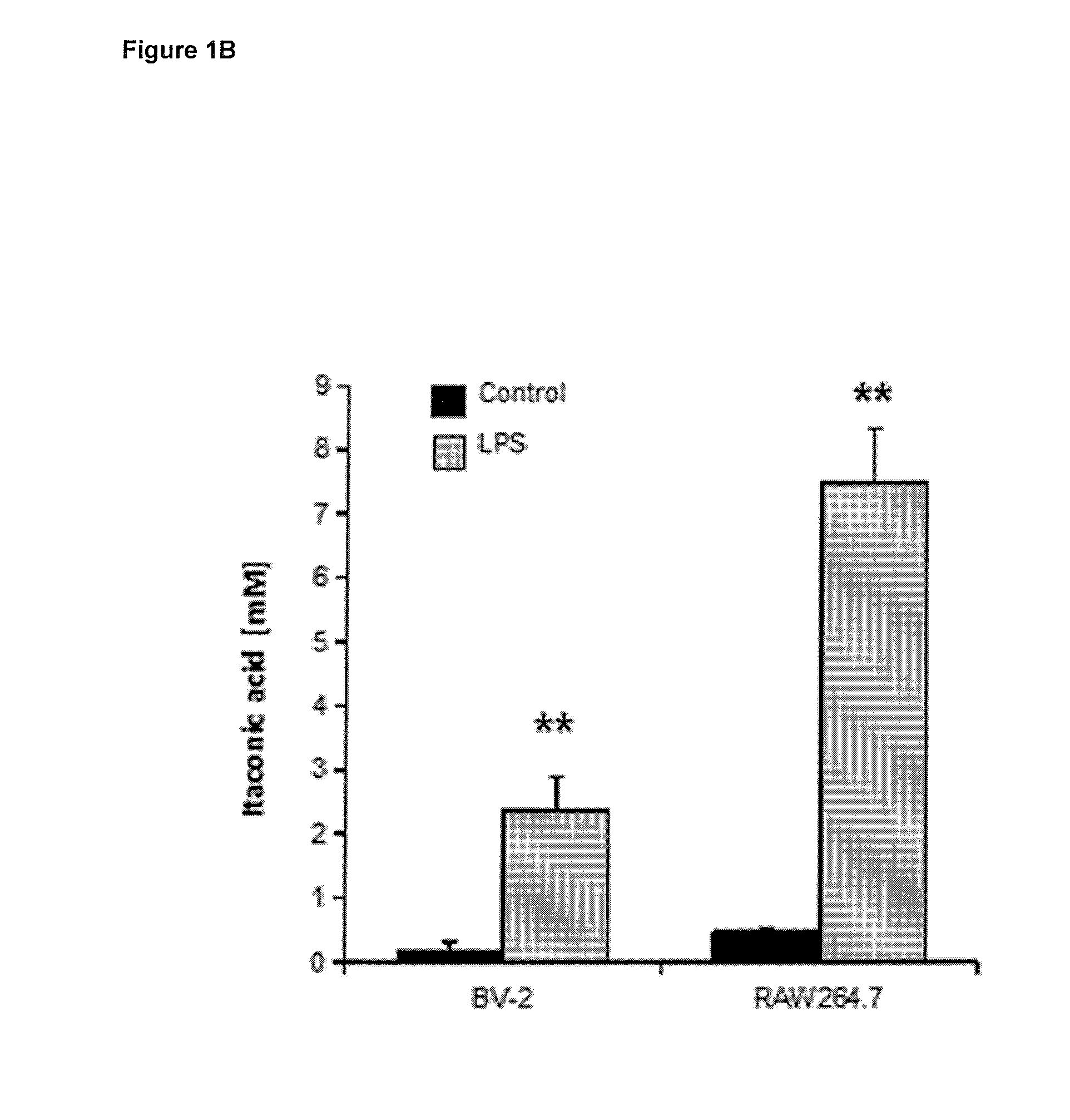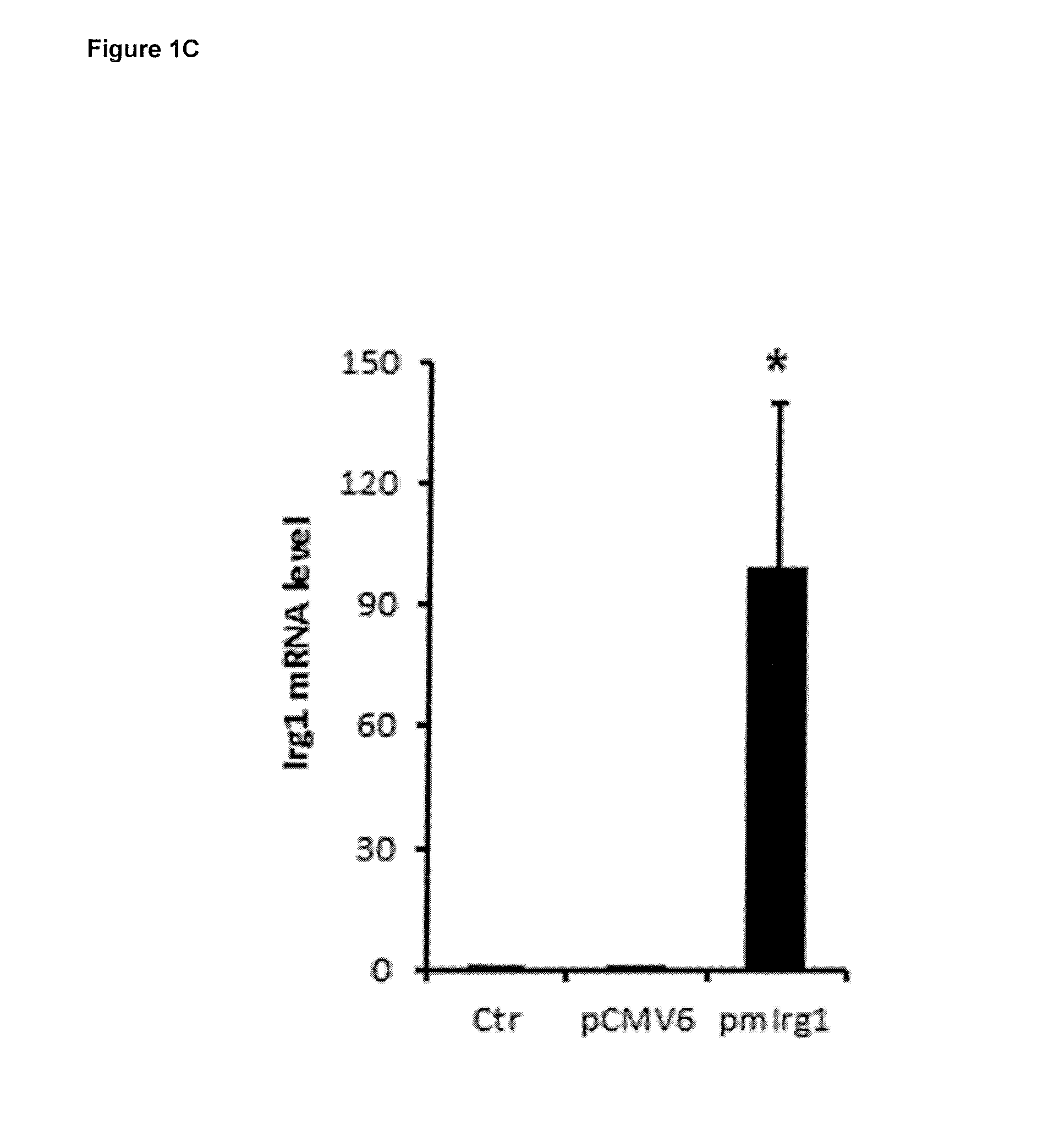Biotechnological production of itaconic acid
a bio-based and acidic technology, applied in biochemical equipment and processes, sugar derivatives, enzymes, etc., can solve the problems of low production rate, high cost, and no chemical process has been able to compete with the biological rou
- Summary
- Abstract
- Description
- Claims
- Application Information
AI Technical Summary
Benefits of technology
Problems solved by technology
Method used
Image
Examples
example 1
Irg1 Function
[0162]To study the Irg1's enzymatic function, the inventors analyzed the metabolomics profile of siRNA mediated Irg1 silencing under Lipopolysaccharide (LPS) stimulation in RAW264.7 cells (murine macrophages). It was observed that the metabolite most significantly affected by Irg1 silencing was itaconic acid. To further study the metabolic activity of Irg1, the inventors expressed murine Irg1 in A549 human lung cancer cells. It was found that cells contained high amounts of both Irg1 gene transcript and itaconic acid metabolite 24 h after transfection, but not in non-transfected cells or in cells transfected with an empty control plasmid.
[0163]Next the inventors characterized the role of Irg1 in the itaconic acid metabolic pathway. Murine Irg1 shows a 23% amino acid sequence identity to CAD expressed by the fungus Aspergillus terreus (FIG. 8). Additionally, the stable-isotope labeling experiments showed that Irg1 encodes a mammalian enzyme that catalyze the decarboxylat...
example 2
Itaconic Acid Metabolic Pathway
[0169]Intriguingly, murine Irg1 shows a 23% amino acid sequence identity to the enzyme cis-aconitate decarboxylase (CAD) expressed by the fungus Aspergillus terreus (FIG. 8). In fact, Irg1 is evolutionary conserved across a large set of species (FIG. 9). This fungus is commonly used for the biotechnological production of itaconic acid at industrial scale (20). The biosynthesis of this dicarboxylic acid has been of interest since it can be used as a starting material for chemical synthesis of polymers (21). The fungal CAD enzyme catalyzes the formation of itaconic acid by decarboxylating cis-aconitate to itaconic acid (22). To determine if mammalian Irg1 has a similar function as CAD in A. terreus, the inventors performed stable-isotope labeling experiments. They incubated LPS-activated RAW264.7 macrophages with uniformly 13C-labeled glucose (U-13C6). Citrate synthase catalyzes the transfer of two labeled carbon atoms from acetyl-CoA to oxaloacetate res...
example 3
Irg1 Protein Purification and CAD Activity Assay
[0171]To directly demonstrate that the Irg1 protein catalyzes the decarboxylation of cis-aconitate, the inventors purified FLAG-tagged Irg1 protein from HEK293T cells transfected with a pCMV6-Entry-Irg1 expression plasmid. As depicted in FIG. 3A, protein extracts prepared from those cells catalyzed the conversion of cis-aconitate to itaconic acid. No itaconic acid formation was detected when extracts were prepared from cells transfected with an empty vector. Furthermore, affinity purification of the extract prepared from FLAG-Irg1 overexpressing cells clearly showed coelution of the cis-aconitate decarboxylase activity with a protein band identified as Irg-1 by SDS-PAGE (expected MW ˜55 kDa for Flag-Irg1; FIG. 3B) and Western blot analysis using anti-Irg1 antibody (FIG. 3C). SDS-PAGE analysis showed that this purification procedure yielded a homogenous preparation of the Irg1 protein (FIG. 3B) thus demonstrating that the cis-aconitate ...
PUM
| Property | Measurement | Unit |
|---|---|---|
| Fraction | aaaaa | aaaaa |
| Density | aaaaa | aaaaa |
Abstract
Description
Claims
Application Information
 Login to View More
Login to View More - R&D
- Intellectual Property
- Life Sciences
- Materials
- Tech Scout
- Unparalleled Data Quality
- Higher Quality Content
- 60% Fewer Hallucinations
Browse by: Latest US Patents, China's latest patents, Technical Efficacy Thesaurus, Application Domain, Technology Topic, Popular Technical Reports.
© 2025 PatSnap. All rights reserved.Legal|Privacy policy|Modern Slavery Act Transparency Statement|Sitemap|About US| Contact US: help@patsnap.com



